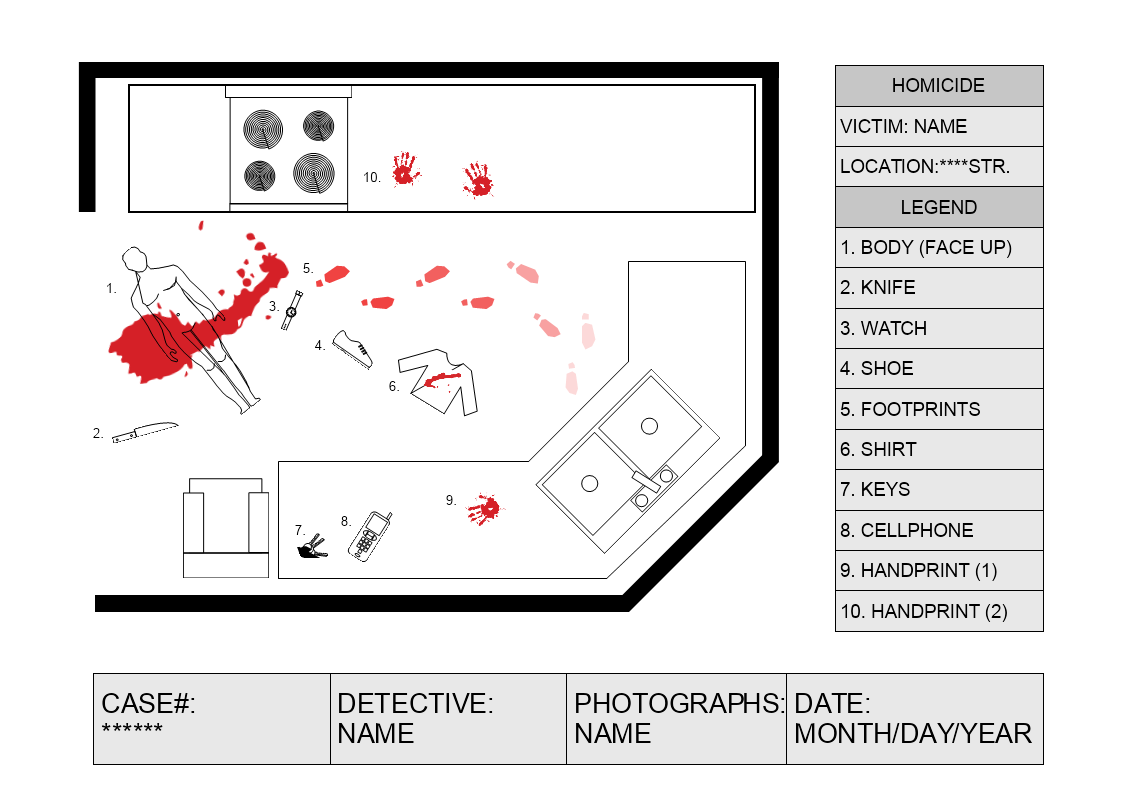This is a Crime Scene Model template that police departments can use as a practice study for crime scene investigations. The template is 100% customizable and you can edit every aspect of it with a few simple clicks in MyDraw.
Download Template:


Download Template:



Crime scene investigation varies from case to case, as well as the type and scope. Local agencies' circumstances apply different procedures. One of the main responsibilities is to preserve physical evidence, collect and submit the evidence for scientific examination.
Physical evidence plays a potentially critical role in the overall investigation and resolution of a suspected criminal act. Documented and preserved evidence is not easier with the development of technology. Investigators have to follow an objective, thorough, and thoughtful approach to presume the legal significance of the scientific evidence.
The level of investigation that will take place lies in the hands of the investigator.
Initial Response/Receipt of Information
The initial responding officer(s) should:
- Note the address/location, time, date, type of call, parties involved.
- Mind the vehicles leaving the crime scene.
- Approach the scene cautiously, scan the entire area, and note any possible secondary crime scenes.
- Make initial observations (look, listen, smell) to assess the scene. Also, ensure officer safety before proceeding.
Safety Procedures
The initial responding officer(s) should:
- Make sure there is no threat to other responders — scan area for sights, sounds, and smells that may present danger to personnel (such as hazardous materials, gasoline, natural gas).
- Reduce the risk of harm to officer(s) while maintaining the safety of victims, witnesses, and people in the area.
- Patrone the scene and control the situation.
- Notify supervisory personnel and call for assistance/backup.
Emergency Care
- Assess the victim(s) and provide immediate medical attention.
- Call for medical assistance.
- Minimize contamination/alteration of the crime scene.
- Point out potential physical evidence to medical personnel.
- Do not clean the scene and avoid removal or alteration of items originating from the scope of the area.
- Document any statements/comments made by victims, suspects, or witnesses at the scene.
Secure and Control Persons at the Scene
- Control all individuals at the scene—prevent individuals from altering/destroying physical.
- Identify all individuals at the scene, such as- suspects and withnesses have to be secured and separate. Victims/family/friends have to be control while compasion is shown. Medical and other assisting personnel.
- Exclude unauthorized and nonessential personnel from the scene.
Identify, Establish, Protect, and Secure
- Potential points and paths of exit and entry of suspects and witnesses.
- Be aware of trace and impression evidence while assessing the scene.
- Set up physical barriers such as ropes, cones, crime scene barrier tape, available vehicles, personnel, other equipment.
- Document the entry/exit of all people entering and leaving the scene.
Turn over control of the scene and brief investigator(s) in charge
- Brief the investigator(s) taking charge.
- Assist in controlling the scene.
- Turn over responsibility for the documentation of entry/exit.
- Remain at the scene until relieved of duty.
Document actions and observations
- Conditions upon arrival.
- Personal information from witnesses, victims, suspects, and any statements or comments made.
- Own actions and actions of others.
